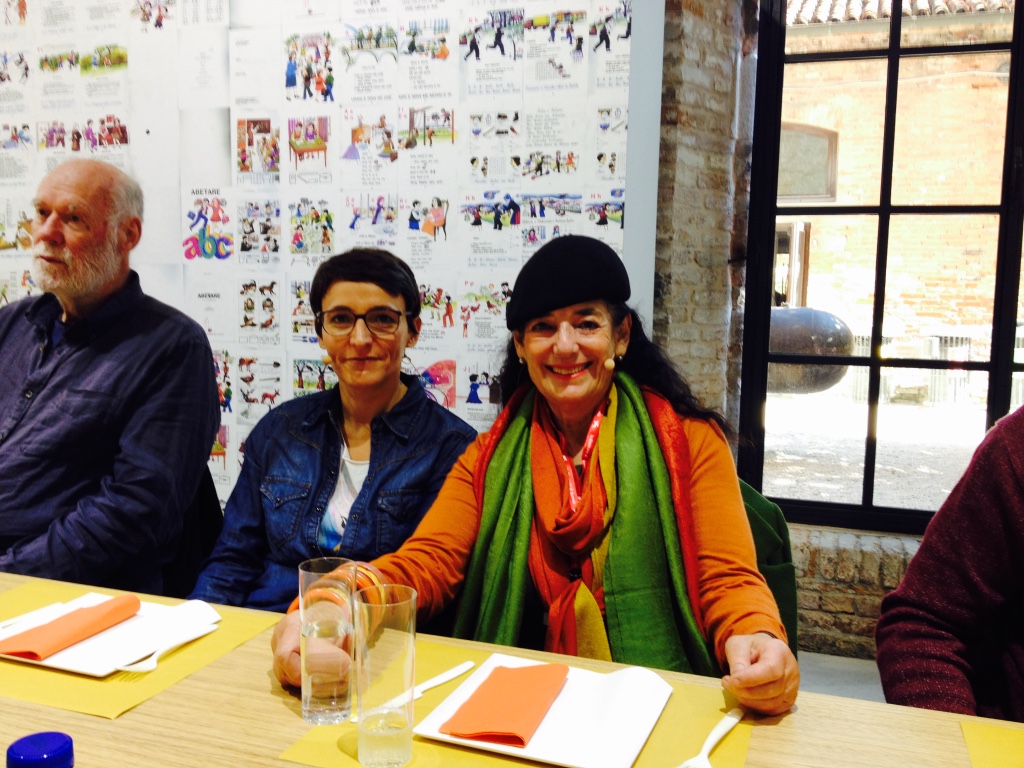
As part of the 57th edition of The Venice Biennale, curated by Christine Macel, Chief Curator of the Pompidou Center in Paris, Bonnie Ora Sherk, along with Marie Voignier, another artist featured in this year’s Biennale, were interviewed by Maria Pesavento, at the Open Table (Tavola Aperta) on October 07, 2017 at the Venice Biennale in Venice, Italy.
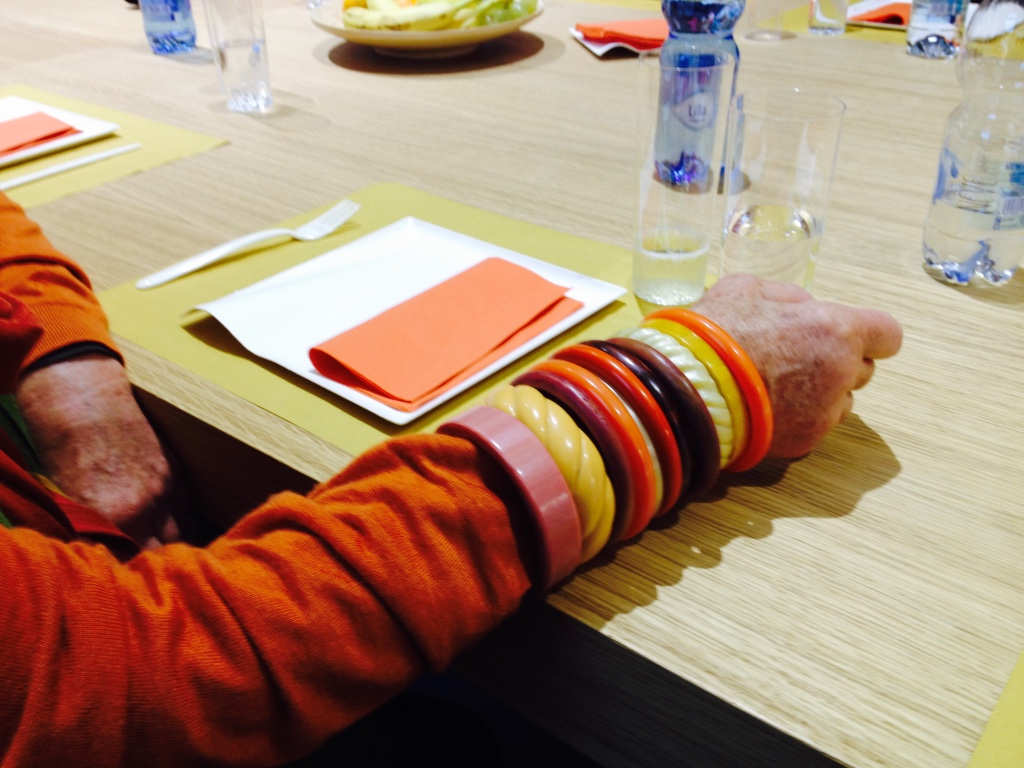
Bonnie Ora discussed her work and installation in the Arsenale, in the Pavillion of the Earth in La Biennale, called, Evolution of Life Frames: past, present, future with the visitors, over a casual lunch at the Tavola Aperta.
Link to full video discussion on La Biennale Website:
https://www.youtube.com/watch?v=3w7wF0CFnKA&t=300s
Excerpts from her talk:
- The installation – Evolution of Life Frames: past, present, future:
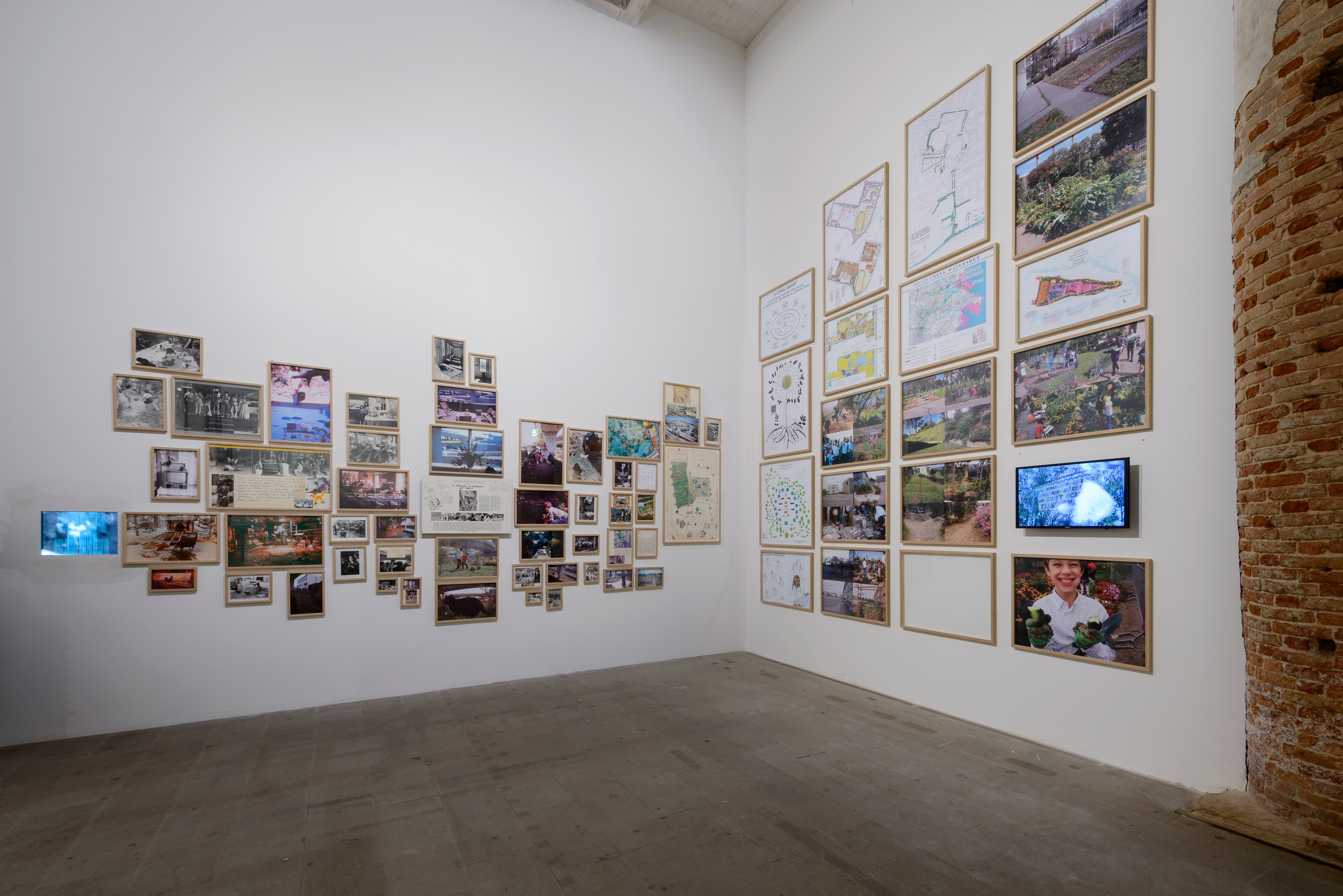

Bonnie Ora explained two major works exhibited at La Biennale — Crossroads Community (the farm) and A Living Library. Crossroads Community (the farm), a pioneering artwork, involved development of an urban farm and art center that incorporated a major freeway interchange in San Francisco, beginning in 1974.
Giving an overview about A Living Library, she elaborated:
“A Living Library is a planetary genre. I work with place-based ecological transformation of communities and schools, and each unique intervention, or each Branch Living Library & Think Park, is place-based, linking the local resources of the community — human, ecological, economic, historic, technological, and aesthetic. When we look at those assets in each community through the lens of time: past, present and future, no matter where we are, we find incredible richness. I work with the community to develop a Master Plan for transformation that incorporates the local resources. The processes of creating a Master Plan with the community is also a learning program for the community. The work has to do with the transformation of places that interlinks with systemically integrated hands-on programs and learning opportunities for all ages.”
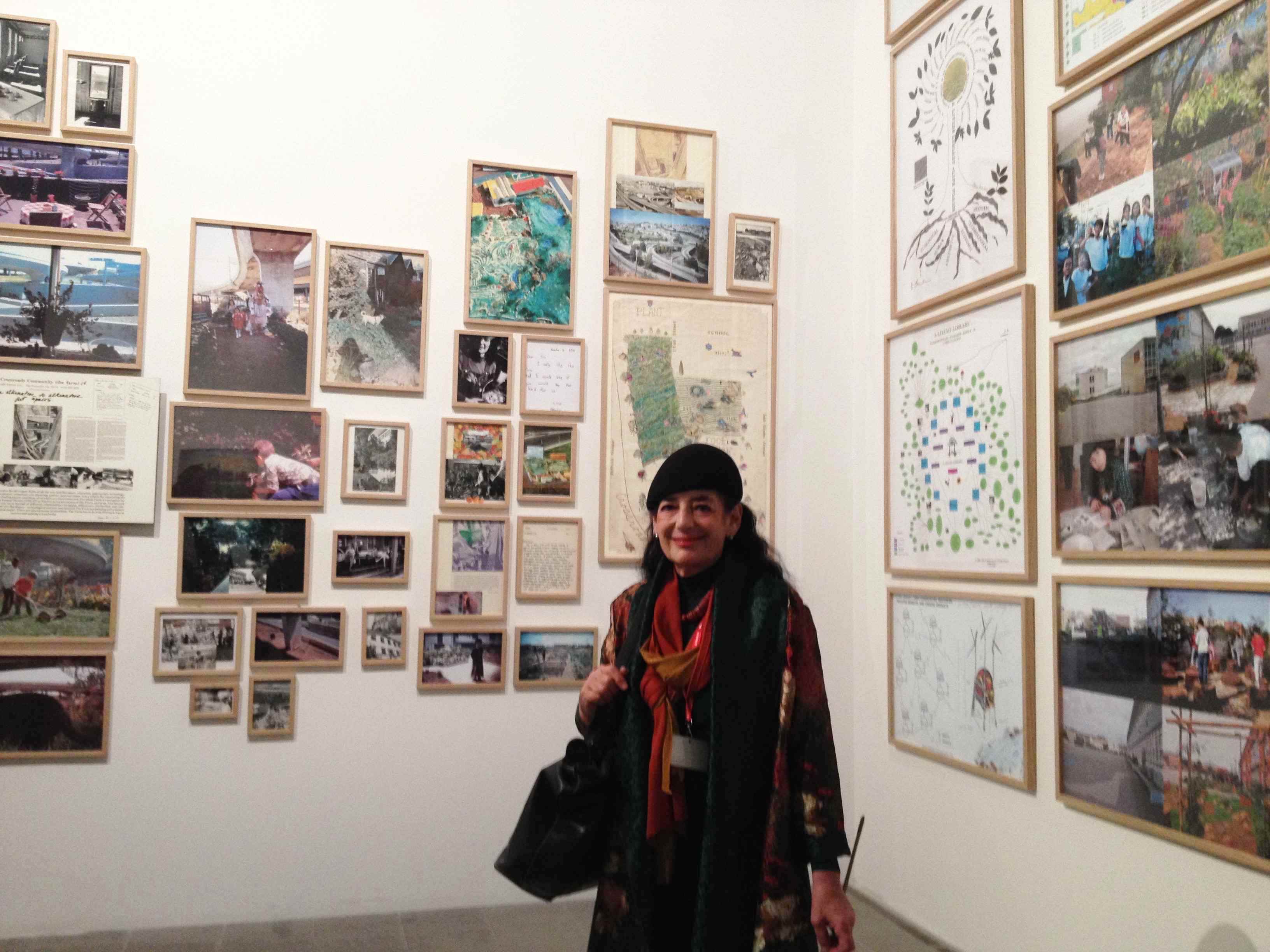
In her installation on A Living Library, three Branch Living Library & Think Parks are shown in addition to an Overview Section: the OMI/Excelsior Living Library & Think Park (San Francisco), the Bernal Heights Living Library Nature Walk (San Francisco), and the Roosevelt Island Living Library & Think Park (New York City).
“The big idea is to develop Branch Living Library & Think Parks in diverse parts of the world – locally and globally – and to link them through Green-Powered Digital Gateways, multi-functional, or multi-Funcshuional sculptural elements in the landscape that allow for bringing water forth from the earth as may be needed, showcasing local resources and processes of communities through multimedia archives, and also allowing for live interactive broadcast between places.”
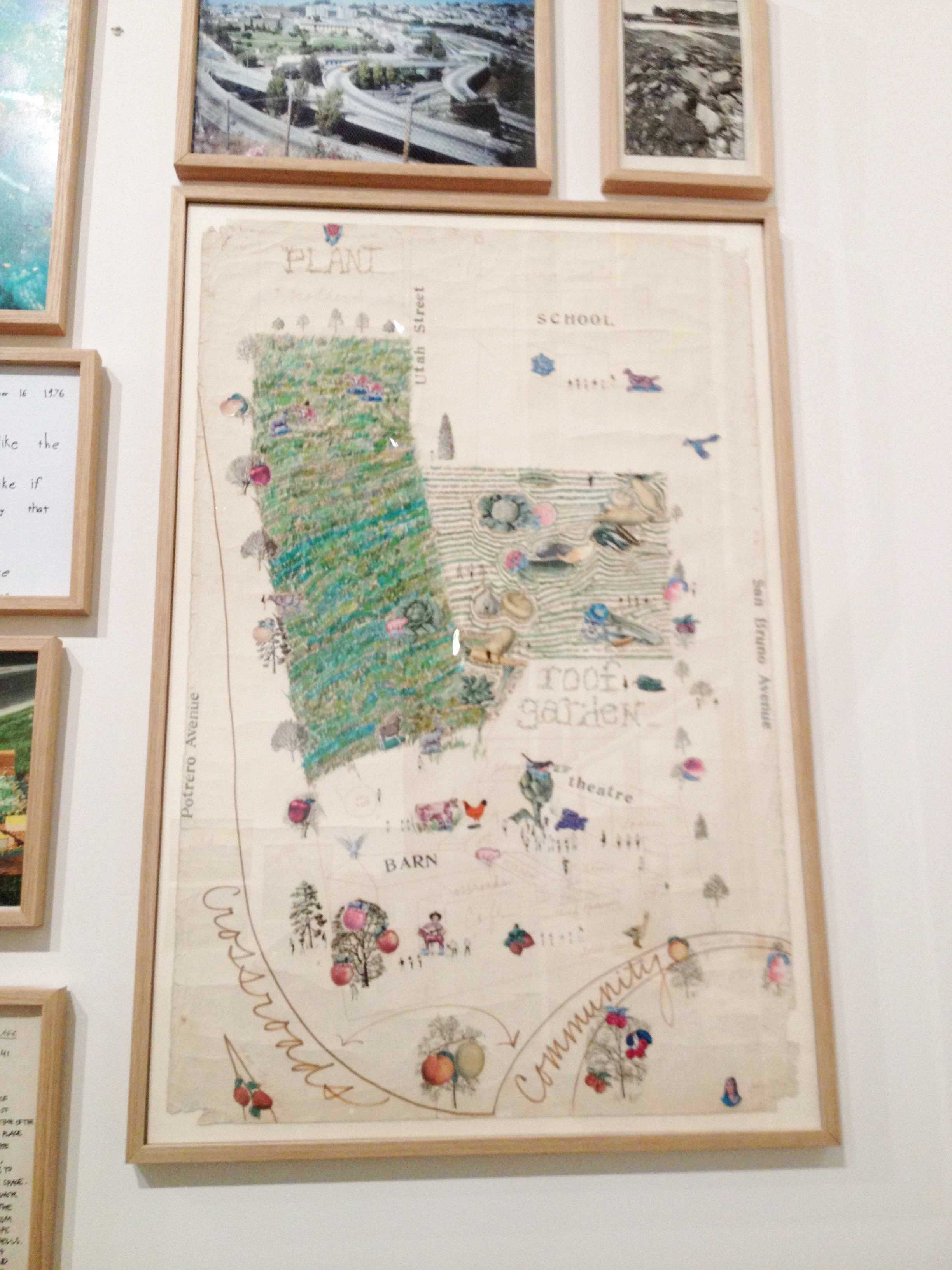
- About her early work: Bonnie Ora called her early work “Environmental Performance Sculpture —using a found or created environment, and creating a performance in the place systemically, which then integrated all elements creating a whole experience”. As a pioneering conceptual artist in the 1970s, some of her notable performance pieces include: Sitting Still Series, Portable Parks 1-111, and Public Lunch.
Discussing her work with live animals in Portable Parks 1-111, Public Lunch, and Crossroads Community (the farm), she emphasized: “I wanted to create opportunities for people to understand the native intelligences of different species of animals, and to get over the human presumption that we are the center of the universe.”
- Goal of her work: “My work now really lives in the community, more than in art institutions,” Bonnie Ora said. “The goal of the work is actually to educate people about ecosystems, natural system, interconnected systems; particularly young people and to make environments and processes more ecological.” She further mentioned working with thousands of PreK-12 students in public schools, educating them through hands-on learning, involving them in the ecological transformation of their local places, and empowering them through real-world experience.

Elaborating on the goals of A Living Library and Life Frames, Inc. the non-profit sponsor of A.L.L. that she founded and directs, Bonnie Ora continued to say:
“A Living Library provides a framework for understanding linked systems — biological, cultural, and technological – It is time for us to begin working together and thinking this way. The work is systemic, ecological design and it has to do with the transformation of places, and then transformation of people in the places. It is time for us to evolve as human creatures and understand how we all are interconnected, with each other and other species.”
- Documentation of the work: Replying to a question regarding documentation of her work, Bonnie Ora said, “I take lots of pictures all the time, because it is all process. Everything is process and it is changing every minute, and so much is going on. Also, the students take pictures and other people take pictures. This work is evolutionary, and I am envisioning the multi-media digital archives that will incorporate these images that show processes and resources over time, on the Green-Powered Digital Gateways. We want to hold on to this history and content, and celebrate it.”
In answering this question, she referred to the work underway now in the Rear Yard of James Denman Middle School in San Francisco, and its transformation from a barren concrete expanse to a series of California Native Learning Zones filled with trees and understory plants, and she explained how the documentation is important to really see and understand the work over time.
- Replying to a question about her biggest challenges: “I swim a lot because I find it is important to swim around the challenges. The biggest challenges are usually the adults who don’t understand or value the work. Related to that may be the lack of money, however, if you do something that is really good and powerful, it is magnetic, and everything comes to you. I actually have a lot of faith in the Universe. I believe that things happen as they should happen. So, I don’t get really worried about a lot of the details, and I don’t take it personally.”
To watch the full conversation at Tavola Aperta in La Biennale 2017, please go to https://www.youtube.com/watch?v=3w7wF0CFnKA&t=300s
Also see: https://www.youtube.com/watch?v=VIXkaySpH90 Evolution of Life Frames: past, present, future on Venice Biennale Website






